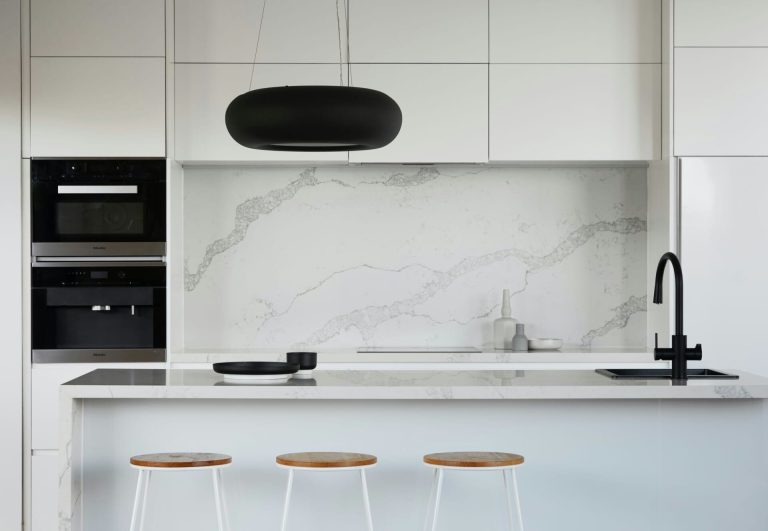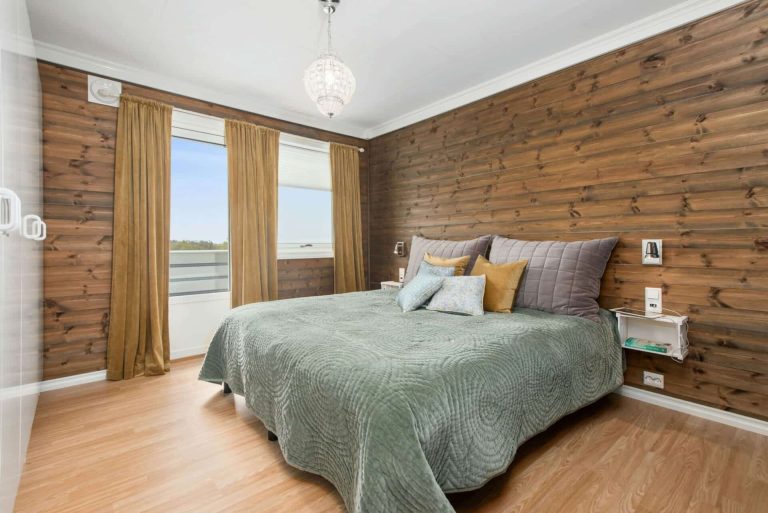Building a home is more than just a construction project; it’s a journey that transforms a dream into reality. As you stand at the beginning of this exciting endeavor, one of the most critical elements to consider is your budget. The prospect of laying the foundation for your future might fill you with inspiration, but without a solid grasp of financial realities, the path ahead can quickly become overwhelming. From choosing materials and hiring contractors to considering contingencies for unexpected costs, every decision hinges on understanding how much you can realistically afford to spend.
In this article, we will delve into essential tips for determining a realistic home construction budget that aligns with your vision while keeping financial stability in mind. We will explore the various factors that can influence your budget, including location, design choices, and market conditions, and equip you with strategies to anticipate potential pitfalls. Whether you are a first-time builder or a seasoned homeowner embarking on a new project, these guidelines will help you navigate the intricacies of budgeting, ensuring that you can create a home that is not only beautiful but also financially viable. By taking the time to lay a strong financial groundwork, you can embark on the adventure of home construction with confidence and clarity.
Understanding Your Financial Landscape
Embarking on the journey of home construction requires a clear understanding of your financial landscape. Your budget isn’t just a number—it’s a detailed map guiding you through the myriad choices you’ll make along the way. Start by assessing your current financial situation, which will include evaluating your savings, income, and any potential financing options. Establishing a solid foundation will enable you to set a realistic starting point. Consider creating a financial planning sheet to visualize your capabilities.
It’s essential to account for all possible expenses, which often go beyond the initial construction costs. Be aware of additional costs such as permits, site preparation, utility connections, and landscaping. Understanding these hidden costs will refine your budget further and reduce the chances of unexpected surprises. Here’s a simple breakdown of common expense categories:
| Expense Category | Estimated Percentage of Total Budget |
|---|---|
| Land Purchase | 20% |
| Construction Materials | 30% |
| Labor Costs | 25% |
| Permits and Fees | 5% |
| Contingency Fund | 10% |
| Landscaping and Finishing | 10% |
Lastly, a contingency fund is a vital component of your budget. This reserve—typically around 10% of your overall budget—acts as a safety net for unforeseen circumstances or changes in project scope. Whether it’s unexpected site conditions or adjustments in material costs, having this cushion can keep your project on track without financial strain. By proactively addressing these factors and continually assessing your financial landscape, you can confidently navigate the construction of your dream home.

Identifying Key Construction Costs
When embarking on a home construction project, understanding the various elements that contribute to the overall cost is crucial. Land acquisition costs are often one of the primary expenses; this includes not only the purchase price but also other related fees such as taxes and closing costs. Additionally, it is essential to factor in site preparation, which may involve clearing, grading, and any required environmental assessments.
Another significant aspect to keep in mind is materials and labor costs. The choice of materials can drastically affect your budget, with options ranging from high-end finishes to cost-effective alternatives. A detailed breakdown should include categories such as:
- Foundation materials
- Framing supplies
- Roofing and insulation
- Interior finishes
- Landscaping
Labor costs are another essential factor, often varying based on the complexity of the project and the region. It is advisable to obtain multiple estimates from reputable contractors. Additionally, don’t overlook the project management fees, which can include costs associated with hiring an architect or project manager to ensure everything runs smoothly. Here’s a simple table to illustrate an estimated breakdown of typical construction costs:
| Cost Category | Estimated Percentage of Total Budget |
|---|---|
| Land | 20% |
| Construction Materials | 40% |
| Labor | 30% |
| Project Management | 10% |

Incorporating Contingency Funds for Surprises
When embarking on a home construction project, it’s crucial to prepare for the unexpected. Construction projects often face unforeseen challenges such as structural issues, delays in materials delivery, or changes in labor costs. Therefore, setting aside a contingency fund serves as a financial safety net, ensuring that minor hiccups do not derail your entire budget. It’s generally recommended to allocate 10% to 20% of your total budget for this purpose.
You can break down contingency costs into various categories to better manage potential surcharges. Consider including funds for:
- Unexpected repairs: Hidden problems like mold or outdated wiring.
- Design changes: Adjustments to meet evolving preferences or new insights.
- Regulatory modifications: Adaptations due to local building codes and zoning laws.
It’s wise to approach your contingency fund with flexibility, as construction projects can be dynamic. Establish a plan for how you’ll manage and allocate these funds when surprises arise, keeping in mind to regularly review and adjust the budget as necessary. A simple overview might look like the following:
| Contingency Category | Recommended Percentage |
|---|---|
| Minor Repairs | 3% |
| Design Changes | 5% |
| Regulatory and Permits | 2% |
| Labor Fluctuations | 5% |

Prioritizing Features for a Balanced Budget
When you’re setting out on the journey of home construction, it’s essential to focus on the features that truly matter to you and your family. Start by creating a list of must-have features versus nice-to-have extras. This prioritization not only helps you stay true to your vision but also keeps your budget in check. Consider factors such as functionality and long-term value when evaluating each feature’s importance. For instance, while an expansive outdoor entertainment area may seem appealing, it might not be as crucial as energy-efficient windows that save on utility bills.
The next step is to engage in a thorough evaluation of potential costs associated with each feature. Reach out to contractors for estimates and gather insights from others who have completed similar projects. By organizing this information, you can construct a clear comparison. A simple table can help visualize your choices alongside their costs:
| Feature | Priority Level | Estimated Cost |
|---|---|---|
| Open-Concept Layout | Must-Have | $25,000 |
| High-Efficiency Appliances | Must-Have | $15,000 |
| Custom Kitchen Cabinets | Nice-to-Have | $10,000 |
| Outdoor Deck | Nice-to-Have | $8,000 |
revisit your budget with your prioritized feature list in hand. Some features may lend themselves to budget-friendly alternatives. For instance, if quartz countertops are out of reach, consider laminate options that still allow you to achieve the desired aesthetic without breaking the bank. Flexibility is key; don’t hesitate to adjust your priorities as you receive bids and revise costs. Balancing essential needs with aesthetic desires ensures that your home will not only be enjoyable but also financially sustainable in the long run.
Q&A
Q&A: Tips for Determining a Realistic Home Construction Budget
Q1: Why is establishing a realistic home construction budget important?
A1: Establishing a realistic budget is crucial as it sets the framework for your entire construction project. A well-planned budget helps you avoid financial strain, ensures you can achieve your desired design and quality, and minimizes the risk of costly adjustments and delays down the line.
Q2: What are the key components to include in my budget?
A2: Your budget should encompass all costs associated with the project, including land acquisition, construction materials, labor, permits, inspections, utilities, interior finishes, and landscaping. Additionally, consider including a contingency fund, typically around 10-20% of your total budget, to address unexpected expenses.
Q3: How can I accurately estimate construction costs?
A3: Begin by obtaining quotes from multiple contractors and suppliers. Research average costs for materials in your area, and analyze previous construction projects similar to yours. Toolkits and online calculators designed for home construction can also provide valuable estimates. Consulting with a construction manager or an architect can further refine your projections.
Q4: What role do location and property size play in budget planning?
A4: Location greatly influences your budget due to variations in labor and material costs, zoning laws, and permitting procedures. Additionally, the size and topography of your property can affect site preparation costs and the complexity of the construction process. Always account for these factors to ensure a practical budget.
Q5: How can I manage fluctuating material costs?
A5: To manage material cost fluctuations, build flexibility into your budget by considering alternative materials or finishes. Stay informed about market trends, engage in efforts to bulk buy materials when possible, and discuss potential substitutions with your contractor that can maintain quality while being cost-effective.
Q6: Should I schedule a time for budget reviews during the project?
A6: Absolutely! Regular budget reviews, ideally at key milestones throughout the project, can help you stay on track. Schedule check-ins to assess spending against the budget, discuss any changes with your contractor, and make necessary adjustments to avoid running into financial difficulties as the project progresses.
Q7: What common pitfalls should I watch out for when setting my budget?
A7: Be cautious of underestimating costs, neglecting to include all necessary expenses, and overlooking potential increases in labor and material prices. Avoid getting swayed by trends leading to overspending on luxury items or features that may not provide a good return on investment. Always prioritize practical and necessary expenditures.
Q8: How can I ensure my budget aligns with my long-term goals?
A8: Reflect on your long-term living needs and financial goals when creating your budget. Consider the sustainability and longevity of your choices and avoid decisions that may seem appealing now but could hinder your financial situation in the future. It’s vital to strike a balance between fulfilling immediate desires and maintaining future financial health.
By considering these questions and answers carefully, you can lay the groundwork for a successful home construction project, ensuring your budget aligns with your expectations and future goals.
To Wrap It Up
As you embark on your journey toward building your dream home, remember that a realistic budget is not just a number—it’s the blueprint for your vision. By understanding the various components involved and embracing the art of planning, you can navigate the complexities of home construction with confidence. Each dollar spent should reflect your priorities and values, ensuring that you invest wisely in your future sanctuary. As you finalize your budget, take a moment to reflect on the process: the research, the adjustments, and the decisions that will shape your home. With careful consideration and a clear strategy, you’ll be well-equipped to turn your dreams into a tangible reality, one brick at a time. Happy building!



